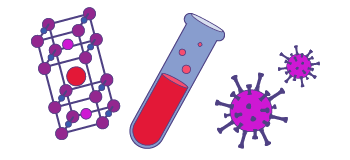Electron Nuclear Double Resonance is a technique of measuring the hyperfine and quadrupole splitting of nuclear spins that are coupled to the electron spins.
Electron Nuclear Double Resonance is a technique of measuring the hyperfine and quadrupole splitting of nuclear spins that are coupled to the electron spins. Only those nuclei are measured that are coupled to the electron spins, and because it is measured via the EPR signal it is more sensitive than NMR . It can also be selective on site and orientation, by selecting positions within the EPR spectrum, for which the high g-value resolution at high fields is very helpful. A variety of ENDOR techniques, both pulsed and cw, are available, including triple-ENDOR.

Explore our magnet schedule to see what exciting research is happening on our stellar fleet of instruments right now.
van Tol, J., et al, Anomalous Phases in Cavity-Free 240 GHz Pulsed ENDOR Spectra of 1.44 GeV Xe-Irradiated LiF, Appl. Magn. Reson., 44 (2013) Read online.
McCamey, D.R., et al, Electronic Spin Storage in an Electrically Readable Nuclear Spin Memory with a Lifetime > 100 Seconds, Science, 330 (2010) Read online.
Morley, G.W., et al, A multifrequency high-field pulsed electron paramagnetic resonance/electron-nuclear double resonance spectrometer, Rev. Sci. Instrum., 79 (2008) Read online.
Nellutla, S., et al, Electron spin relaxation and 39K pulsed ENDOR studies on Cr5+-doped K3NbO8 at 9.7 and 240 GHz, Phys. Rev. B, 78 (2008) Read online.
Last modified on 22 August 2023